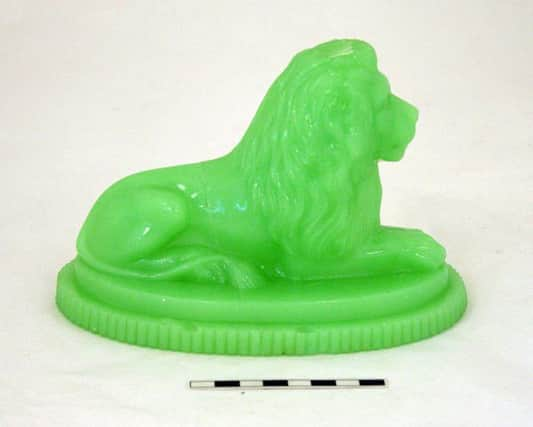Leeds nostalgia: Radioactive lion from 19th century


But put it under a UV light, and what previously seemed like an innocuous paperweight begins to give off an eerie, green glow.
The lion’s curious luminescence is actually due to small quantities of the radioactive element uranium, which was added to the glass during production. Produced by James Derbyshire and Sons, a Manchester firm in 1874, the lion came to Leeds in a number of pieces for conservators at the Leeds Discovery Centre to restore.
Advertisement
Hide AdAdvertisement
Hide AdUsing a Geiger counter, they detected trace amounts of radiation, confirming its invisible additional ingredient, before carefully photographing it under UV light.
In the early 19th century, uranium was deliberately added to some glassware to give it a green or yellow tinge, which used to be described as “Vaseline glass.”
Whilst iron can be used to give glass a similar colour, adding Uranium also made ornaments fluorescent, meaning they would stand out more in the Victorian home. Today, the lion is now carefully stored in a ventilated store with other examples of the same type of glass and ceramic.
Councillor Brian Selby, Leeds City Council’s lead member for museums and galleries, said: “Like many of the items in our collection, there’s more than meets the eye and it’s only when you delve into the story behind the object that its true nature becomes apparent.”
www.leeds.gov.uk/museumsandgalleries/Pages/discoverycentre.aspx